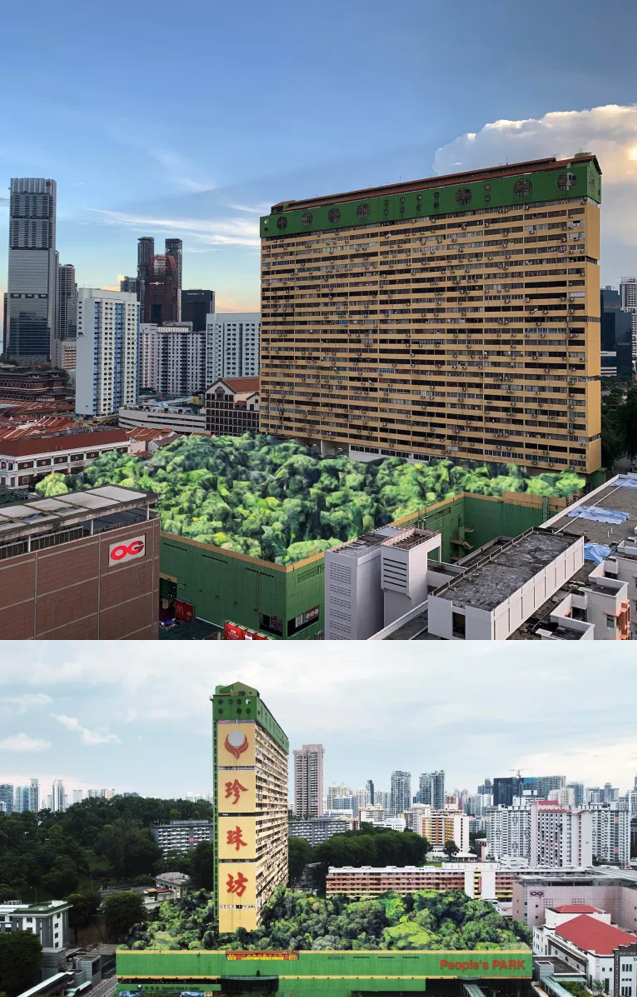
People’s Park Complex in Singapore-Part 3. Re-invention is what has always interested me professionally and as a teacher of architecture. Perhaps seen through a conceptual lens, the sketch below shows the simple yet straightforward transposing of a colonial morphology into a new modernist ideal of the 1970’s urban renewal program.
In fact, the site for the People’s Park Complex was Singapore’s first Urban Renewal Department sale of land in 1967, a sale that is in fact a 99-year land lease. But as we now know, if housing is dissociated from commerce this strategy could lead to the ghastly and unfortunate US shopping malls that now are deserted and mostly obsolete even before the Covid-19 pandemic.

For me, the interest in this building is still not about its aesthetics, although I have grown to find interest in many of its formal attributes. My initial curiosity that has grown into admiration. It is not only that I better understand the building as an icon of the post-independence period, but that it references a British brutalist style, follows urban principles of Le Corbusier, gives relevance to the notion of architecture and planning as co-dependent partners, all the while envisioning a new building type (shopping mall and housing) in South East Asia.
In my desperate attempts to find plans of the overall organization of the apartments, I discovered a number of current projects that use the People’s Park Complex as a key element of a thesis proposal. Each project in its own right postulates that modernism deserves attention for its role in re-inventing this particular building. Below are three projects that seem timely as there is much discussion right now about what to do with the People’s Park Complex, although it still has fifty years on its land lease!
Jonathan Choe
Proposed “What if People’s Park Complex (which was named because the site used to be a public park) could be reinvigorated by turning the podium rooftop into a new public park for the city? This would provide necessary green relief for the city, reduce the urban heat island effect, and soften the brutal image of the building with greenery! Proceeds from the public amenity could be used to refurbish the rest of the building, ensuring its continued relevance.”
For more information: https://www.archigardener.com/2021/02/peoples-park-complex.html

Lin Zhengyu Leo

Brian Lee

These three projects are part of a genuine interest in working within an existing urban fabric that is dedicated to artifacts that were until recently, often forsaken due to the architecture star system and a stigma surrounding social housing which made it not deserving as part of an architectural intervention. Yet, there is much to research on this topic and each of these interventions reminds me of the work of Anne Lacaton and Jean-Philippe Vassal and the courageous jurors who selected their office as the laureates of the 2021 Pritzker Prize.
“…Lacaton and Vassal reexamine sustainability in their reverence for pre-existing structures, conceiving projects by first taking inventory of what already exists. By prioritizing the enrichment of human life through a lens of generosity and freedom of use, they are able to benefit the individual socially, ecologically and economically, aiding the evolution of a city.”
Excerpt from the Pritzker Prize announcement
People’s Park Complex in Singapore-Part 1
People’s Park Complex in Singapore-Part 2